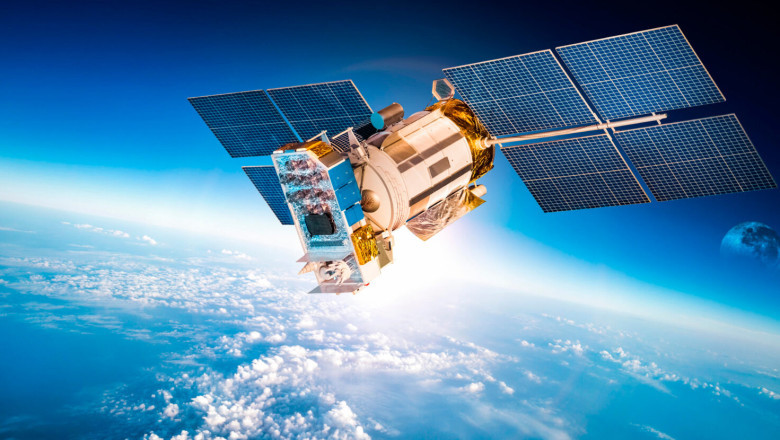views

The Rise of Satellite as a Service
The space industry is rapidly evolving with new technological advancements and business models. One emerging model is Satellite as a Service (SaaS) which provides satellite connectivity and data on demand. Under the SaaS model, companies can access satellite capabilities without having to own or operate their own satellites. This article explores how the Satellite as a Service model is transforming the space sector and enabling new opportunities.
What is Satellite as a Service?
Satellite as a Service refers to the ability for companies to purchase satellite-enabled capabilities on a subscription or pay-per-use basis rather than owning their own satellites. Under SaaS, the satellite operator handles satellite ownership, operations, maintenance and replacement while customers purchase communication and data services. Some key advantages of SaaS include:
- Lower Costs And Upfront Investment - Customers only pay for what they need rather than investing billions in their own satellites. This removes barriers for new customers and makes space accessible for more organizations.
- Flexibility - Customers can scale up or down their usage depending on varying needs. New customers can test satellite services before fully committing.
- Faster Deployment - SaaS allows rapid access to space capabilities without the lengthy process of procuring, launching and operating satellites. Services can be accessed immediately once requirements are defined.
- Shared Infrastructure - By sharing satellite capacity, costs are distributed across multiple customers leading to lower pricing overall. Infrastructure is optimized through a shared fleet approach.
Enabling New Use Cases
The SaaS model is enabling new applications and industries to utilize space that were previously not feasible. Some emerging use cases include:
- Internet of Things (IoT) - Constellations like Orbcomm and Iridium are providing global low-cost connectivity for IoT devices including sensors, asset trackers and more. This allows deployment of IoT solutions worldwide.
- Backbone infrastructure - Companies like Samsung, OneWeb and SpaceX are building mega constellations to deliver broadband connectivity globally. This will provide internet access for rural and remote regions.
- Government services - Agencies are procuring SaaS solutions for services like border monitoring, natural disaster response communications and more.
- Maritime - Vessel tracking, weather monitoring, telemedicine and more are now possible with global maritime broadband access.
Growth Of Key Providers
Several companies have emerged to offer different types of SaaS and are fueling growth in the sector:
- Large Constellation Providers - SpaceX (Starlink), OneWeb, Telesat are building massive low earth orbit (LEO) broadband constellations.
- Geosynchronous Operators - SES, Intelsat, Eutelsat provide traditional satellite bandwidth services globally in a SaaS model.
- LEO Providers - Kepler, Swarm,Planet operate smaller specialized constellations targeting vertical markets.
- SAR Operators - Capella Space, BlackSky offer Synthetic Aperture Radar imaging data on a subscription basis.
- MEO Networks - Iridium delivers narrowband satellite connectivity in a SaaS model for over 25 years.
- Regional Players - Astrix offers services regionally in Europe, Middle East and Africa regions.
Future Outlook
As the capabilities of SaaS expand and costs reduce, its adoption rates are expected to accelerate across all sectors. New applications will also emerge:
- 5G Backhaul - LEO/MEO constellations provide connectivity solutions for ubiquitous 5G networks. Cellular operators are partnering with satellite operators.
- Commercial Space Stations - Axiom Space is building a commercial space station module where firms can rent ports for experiments and research.
- In-Space Services - On-orbit servicing, assembly and manufacturing could all be offered via SaaS by companies like Northrop Grumman.
- Earth observation analytics - Through SaaS, analytics firms will provide vertical-specific insights derived from massive amounts of satellite imagery and data.
In conclusion, the Satellite as a Service model is playing a major role in opening new frontiers in space utilization and enabling companies across industries to benefit from satellite technologies. It paves the way for greater participation in the new space economy.
Get more insights on this topic: https://www.ukwebwire.com/global-satellite-as-a-service-revolutionizing-connectivity-around-the-world/




















Comments
0 comment